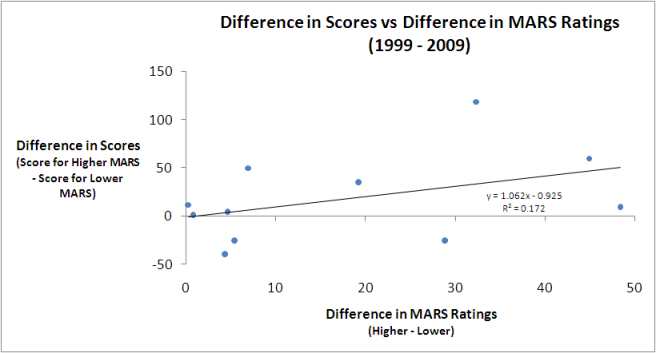If the Grand Final were to be played this weekend, what prices would be on offer?
We can answer this question for the TAB Sportsbet bookie using his prices for this week's games, his prices for the Flag market and a little knowledge of probability.
Consider, for example, what must happen for the Saints to win the flag. They must beat the Dogs this weekend and then beat whichever of the Cats or the Pies wins the other Preliminary Final. So, there are two mutually exclusive ways for them to win the Flag.
In terms of probabilities, we can write this as:
Prob(St Kilda Wins Flag) =
Prob(St Kilda Beats Bulldogs) x Prob (Geelong Beats Collingwood) x Prob(St Kilda Beats Geelong) +
Prob(St Kilda Beats Bulldogs) x Prob (Collingwood Beats Geelong) x Prob(St Kilda Beats Collingwood)
We can write three more equations like this, one for each of the other three Preliminary Finalists.
Now if we assume that the bookie's overround has been applied to each team equally then we can, firstly, calculate the bookie's probability of each team winning the Flag based on the current Flag market prices which are St Kilda $2.40; Geelong $2.50; Collingwood $5.50; and Bulldogs $7.50.
If we do this, we obtain:
- Prob(St Kilda Wins Flag) = 36.8%
- Prob(Geelong Wins Flag) = 35.3%
- Prob(Collingwood Wins Flag) = 16.1%
- Prob(Bulldogs Win Flag) = 11.8%
Next, from the current head-to-head prices for this week's games, again assuming equally applied overround, we can calculate the following probabilities:
- Prob(St Kilda Beats Bulldogs) = 70.3%
- Prob(Geelong Beats Collingwood) = 67.8%
Armed with those probabilities and the four equations of the form of the one above in bold we come up with a set of four equations in four unknowns, the unknowns being the implicit bookie probabilities for all the possible Grand Final matchups.
To lapse into the technical side of things for a second, we have a system of equations Ax = b that we want to solve for x. But, it turns out, the A matrix is rank-deficient. Mathematically this means that there are an infinite number of solutions for x; practically it means that we need to define one of the probabilities in x and we can then solve for the remainder.
Which probability should we choose?
I feel most confident about setting a probability - or a range of probabilities - for a St Kilda v Geelong Grand Final. St Kilda surely would be slight favourites, so let's solve the equations for Prob(St Kilda Beats Geelong) equal to 51% to 57%.














